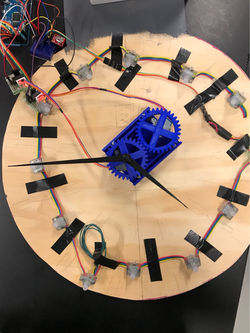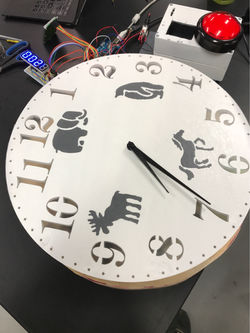top of page

James C. Stapleton
University of Virginia '18
Projects
Natural Ground Illuminance Modeling
Summer 2015
During my full-time internship at the U.S. Naval Observatory in Washington, D.C., I researched the viability of two illuminance prediction models to make a recommendation for the method used by the U.S. Navy. After reducing temperature, air pressure, and weather data for the relevant time period, and approximating the background surface albedo of the observation site, I compared natural ground illuminance observations taken at White Sands Missile Range, NM to generated illuminance predictions in IDL and C.

Independent Study: Motion of Jupiter's Great Red Spot
Spring 2015
In the Spring of my first year at the University of Virginia, I took on an independent study in Astronomy. I analyzed ground-based observational data from 2002-2015 for patterns in the longitudinal drift and oscillation of Jupiter’s Great Red Spot (GRS). The mean normal longitudinal drift rate for this time period was 129.5″/day and frequency analysis on Jovian apparition periods yielded a peak oscillation period of 89.09 days. Variation in the longitudinal drift rate of the GRS yielded evidence of drift rate disturbances due to encounters with other Jovian surface features. The oscillation value of 89.09 days aligned with values determined in the past, demonstrating the continuity of the Great Red Spot’s ≈90 day oscillations. My paper further discusses methods for mathematically modeling the changing position of the GRS over long-term time spans. My paper was accepted by the American Astronomical Society Astronomical Journal in 2015.
Systems Engineering Multi-Attribute Decision Analysis
Fall 2015
I worked with a team and applied the systems decision analysis process to evaluate real data from the Virginia Department of Transportation (VDOT). My group provided the VDOT Commissioner with alternative choices of five-year plans prioritizing the repair of 182 structurally deficient bridges under different budget constraints.

Electromechanical Systems: Line-Following Delivery Robot
Spring 2016
In the Spring of my second year at the University of Virginia, I worked on an interdisciplinary team to develop a small line-following robot that takes orders from a form on the internet, uses a LAMP database model to process the order and retrieve the item from a "warehouse," then deliver the item to its destination, and update the inventory of the items while keeping track of order history on an online database.
Autonomous Object-Avoiding Vehicle
Fall 2016
In an annex to the line-following robot, I worked with an interdisciplinary team on the design of an autonomous vehicle. Using a combination of reactive and deliberative control, the robot was designed to drive toward an IR beacon, while dodging around various objects in its way without hitting them by sensing its environment via ultrasonic sensors. The system used a number of control algorithms, including proportional/integral/derivative to avoid the objects.
Integrated Systems Design: Remedial Clock
Spring 2017
In the Spring of my third year at the University of Virginia, I worked on a team to create an instructional technology tool to teach special needs students how to read an analog clock. My team and I interviewed multiple stakeholders, identified needs and insights, and then created a series of iterated prototypes to work toward the best design. We created an integral design with a 3D-printed clock mechanism, a single microcontroller, and multiple functional modes that maximized the educational value of the final design.
 |
|---|
 |
 |
 |
 |
 |
bottom of page
